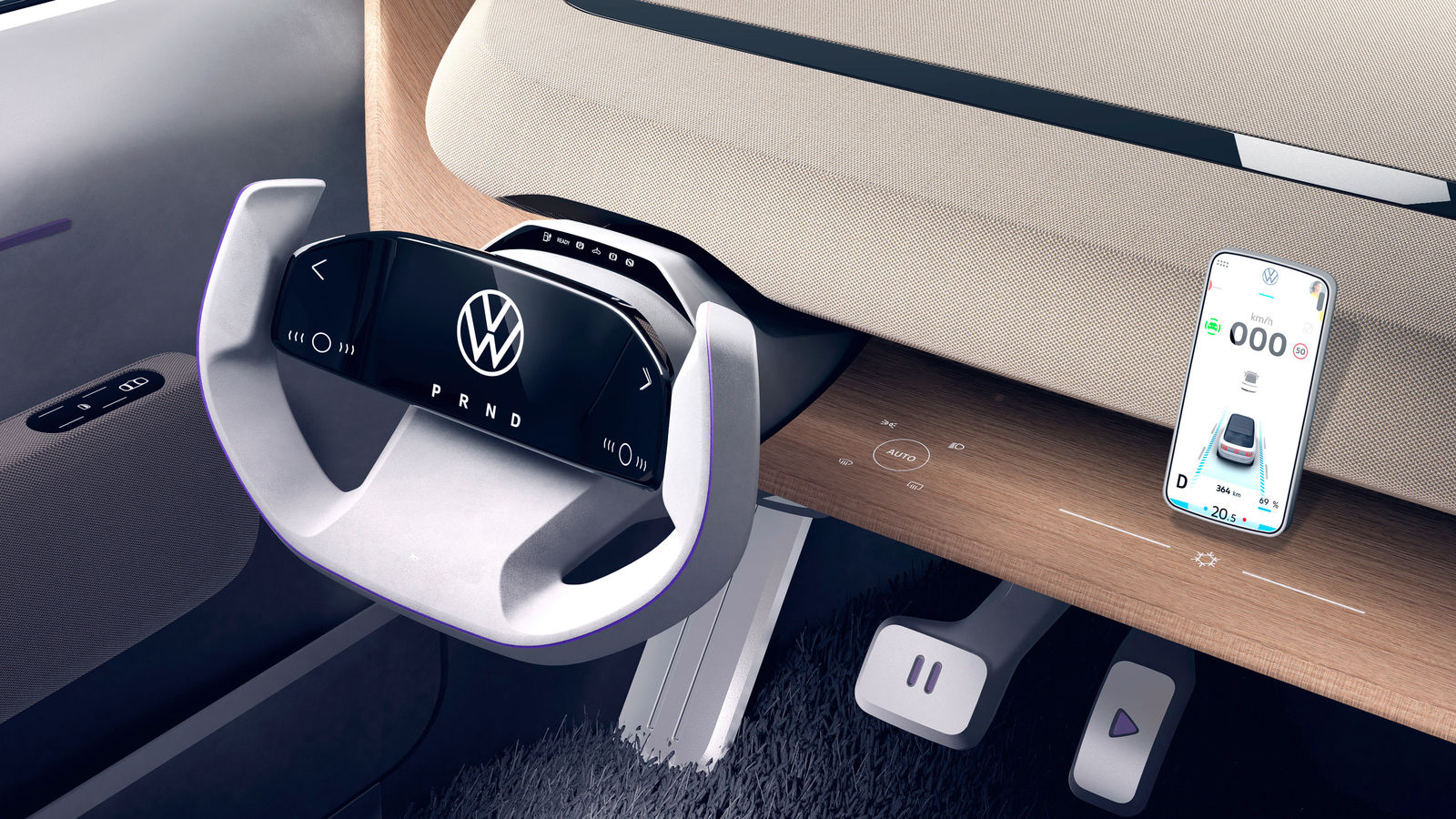Central control panel on the steering wheel. In terms of operation, high-tech is applied with the primary purpose of making driving and spending time in the ID. LIFE as straightforward and comfortable as possible. Its interior is completely free of switches, buttons or controls of the conventional kind, making it an oasis of simplicity in the midst of an increasingly complex world. The hexagonal and open-topped steering wheel of the ID. LIFE features a touch-sensitive control panel with touch surfaces to control key driving functions such as gear selection, turn signals, horn and windscreen wipers. Another touch surface is integrated in the wooden surface of the dash panel surround – directly next to the steering wheel. Light functions and basic climate control functions are activated here.
Digitally networked. By using an app together with the Volkswagen ID, the user’s mobile phone is fully integrated into the operating system of the ID. LIFE according to the principle “Bring your own device”. This allows fine-tuning of the ventilation and climate control settings as well as operation of the navigation, communication and infotainment functions as required. The menu is selected via a separate touch panel on the steering wheel or alternatively via voice control. The display is a head-up display that projects the required functions onto the windscreen of the ID. LIFE in the driver’s immediate field of vision.
Cameras replace mirrors. The combination of digital technology and purist design also ensures straightforward interaction between the ID. LIFE and its users in a number of other ways. Access to the vehicle is granted by means of a camera integrated in the B-pillar combined with facial recognition software. After the user has been identified, the door handle on the driver's side extends. Just like the exterior mirrors, the interior mirror is replaced with a camera system. The images it generates are shown on a 9-inch display in the upper part of the dash panel.
Door pockets with inductive smartphone charging function. Touch surfaces embedded in the door mirror pads are used to open the doors from the inside as well as to lower and raise the side windows. The door trim also features flexible pouches with purple piping that can hold mobile phones – and inductively charge them.
Retractable projection screen. The variable seating landscape of the ID. LIFE can be easily transformed into a cinema or gaming lounge. The game console and projector are integrated in the ID. LIFE’s multimedia system. The action can be followed on a projection screen that extends from the upper part of the dash panel on demand via smartphone control or by means of a panel in the roof frame and covers the entire windscreen. The speakers of the audio system are invisibly integrated under the fabric surfaces of the head restraints and door mirror pads. The “Bring your own device” principle applies to the rest of the infotainment programme, too. Personal devices can be connected to the multimedia system of the ID. LIFE and supplied with power via a 230-volt (16 A) socket in the interior. Individual content is then displayed on the projection screen. This allows it to be used as a cinema screen or as a large screen for surfing the internet. A camera is installed in the centre of its upper frame section, allowing occupants to take selfie shots which can instantly be shared online with friends and family.
